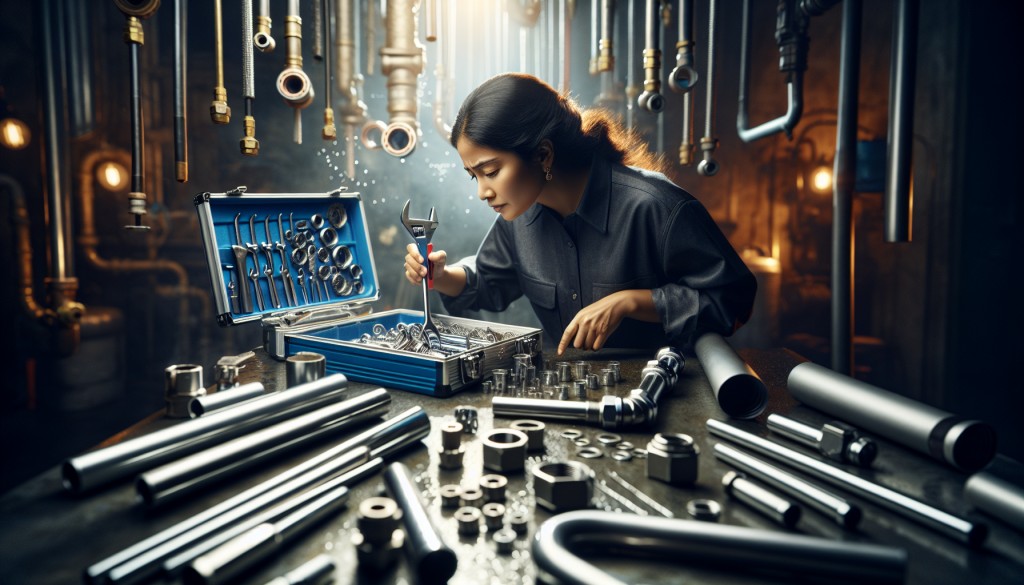Overview of Eco-Friendly Hot Water Technologies
As the global focus on sustainability intensifies, the demand for eco-friendly hot water systems has surged, particularly in urban areas like Sydney. Hot Water System Installation Costs in Sydney: What to Expect . With a growing awareness of environmental impact and energy conservation, homeowners are increasingly seeking water heating solutions that not only meet their daily needs but also contribute to reducing their carbon footprint. Sydney, with its progressive approach to sustainability, offers a variety of advanced eco-friendly hot water technologies. Here, we explore the top five systems that stand out for their efficiency and environmental benefits.
First on the list are solar water heaters, which are perhaps the most popular eco-friendly option available in Sydney. These systems harness the abundant Australian sunlight to heat water, significantly reducing reliance on fossil fuels. By converting solar energy into heat, these systems can efficiently supply hot water for a household, with the added benefit of reducing electricity bills. With their long-term cost savings and minimal environmental impact, solar water heaters are an excellent investment for environmentally conscious homeowners.
Heat pump water heaters represent another innovative technology making waves in Sydney.
Top 5 Eco-Friendly Hot Water Systems Available in Sydney - British Standard Pipe
- Plumbing fixture
- Sewer gas
- pipe
Tankless (or instantaneous) water heaters are also gaining traction in the eco-friendly market. These systems heat water only when needed, thus eliminating the energy losses associated with maintaining a tank of hot water. By providing on-demand hot water, tankless systems ensure that energy consumption is minimized, which is both cost-effective and environmentally friendly. Their compact size and efficiency make them a popular choice for urban dwellers with limited space.
Another noteworthy option is the greywater heat recovery system. This technology recycles heat from wastewater, such as that from showers and sinks, and uses it to preheat incoming cold water. By capturing and reusing energy that would otherwise be lost, greywater heat recovery systems significantly reduce energy requirements for heating water. This innovative approach not only lowers energy consumption but also highlights the potential for integrating sustainable practices into everyday household processes.
Lastly, hybrid water heaters offer a combination of technologies to optimize efficiency and performance. Leak These systems typically incorporate elements of both conventional and heat pump water heaters, automatically switching between modes to ensure the most efficient operation. Hybrids are particularly effective in reducing energy use during peak demand times, making them a smart choice for homeowners looking to balance sustainability with performance.

In conclusion, Sydneys commitment to sustainability is reflected in the diverse range of eco-friendly hot water systems available to its residents. From solar and heat pump technologies to tankless and greywater recovery systems, each option offers unique benefits that cater to different needs and preferences. By adopting these advanced systems, Sydney homeowners can enjoy reliable hot water while making a positive contribution to the environment. As technology continues to advance, the future looks promising for even more efficient and sustainable water heating solutions.
Criteria for Evaluating Eco-Friendly Hot Water Systems
When considering the implementation of eco-friendly hot water systems, particularly in a city like Sydney, it is critical to evaluate certain criteria to ensure both environmental responsibility and economic efficiency. The top five eco-friendly hot water systems available in Sydney are often chosen based on their energy efficiency, environmental impact, cost-effectiveness, technological innovation, and ease of integration into existing home systems.
Firstly, energy efficiency is a paramount criterion. This involves assessing how well a hot water system converts energy into heat while minimizing waste. Systems such as solar hot water systems and heat pumps are at the forefront of energy efficiency. Solar systems harness the abundant sunlight in Sydney, making them particularly effective, while heat pumps use ambient air to heat water, providing a significant reduction in electricity usage compared to traditional electric water heaters.
Environmental impact is another critical factor. This involves understanding the systems carbon footprint during its production, usage, and disposal. Systems that utilize renewable energy sources, like solar and geothermal, are inherently more eco-friendly as they contribute to lowering greenhouse gas emissions. Additionally, some systems are designed with recyclable materials, further reducing their environmental impact over their lifecycle.

Cost-effectiveness encompasses both the initial investment and the long-term savings on utility bills. Although systems like solar hot water heaters require a higher upfront cost, government incentives and rebates in Sydney can alleviate some of this financial burden. Moreover, the savings accrued from reduced energy bills often offset the initial costs over time, providing significant economic benefits in the long run.
Technological innovation is also a crucial consideration. Modern eco-friendly hot water systems often incorporate advanced technology such as smart controls, which optimize energy use by adjusting the heating schedule based on usage patterns. Continuous developments in this field ensure that these systems become more efficient and easier to use, which is a significant advantage for homeowners looking to upgrade.
Lastly, the ease of integration should not be overlooked. This involves assessing how easily a new system can be assimilated into an existing home infrastructure. For instance, tankless water heaters, which heat water on demand, are often smaller and can be installed without extensive modifications to the home. This makes them an attractive option for those seeking to minimize installation disruptions and costs.
In conclusion, when evaluating eco-friendly hot water systems in Sydney, it is essential to consider these five criteria. By prioritizing energy efficiency, environmental impact, cost-effectiveness, technological innovation, and ease of integration, homeowners can make informed decisions that benefit both their wallets and the planet. As these systems continue to evolve, they offer increasingly viable solutions for reducing our carbon footprint while meeting our daily needs.

Comparison of the Top 5 Eco-Friendly Hot Water Systems in Sydney
In recent years, the demand for eco-friendly hot water systems has surged, driven by a growing awareness of environmental issues and a collective push towards sustainable living. Sydney, as a vibrant and progressive city, is at the forefront of this movement, offering a range of environmentally friendly options for heating water. Here we compare the top five eco-friendly hot water systems available in Sydney, providing insights into each systems efficiency, cost-effectiveness, and environmental impact.
Firstly, solar hot water systems stand out as a popular choice among eco-conscious homeowners. These systems harness the abundant solar energy available in Sydney, reducing reliance on conventional energy sources. Among the solar options, Evacuated Tube Systems are highly efficient, even on cloudy days, making them ideal for Sydneys variable weather. While the initial installation cost can be significant, the long-term savings on energy bills and the reduced carbon footprint make them a worthwhile investment.
Next, we consider heat pump water heaters, which are gaining traction due to their impressive energy efficiency. These systems work by extracting heat from the air and using it to heat water. British Standard Pipe In comparison to traditional electric or gas water heaters, heat pumps use significantly less energy, contributing to lower greenhouse gas emissions. Their performance is relatively stable in Sydney's mild climate, making them a reliable and eco-friendly choice.
Tankless water heaters, or instantaneous water heaters, are another option that has captured the attention of environmentally conscious consumers. By heating water on demand, these systems eliminate the energy losses associated with maintaining a tank of hot water. This efficiency translates into lower energy consumption and reduced environmental impact. Although they require a higher power input during operation, their overall energy efficiency can outweigh this concern, especially in smaller households.
Biomass water heaters offer a more unconventional, yet sustainable, approach to heating water. These systems use organic materials, such as wood pellets, as fuel, providing a renewable energy source. While not as common in urban areas like Sydney, they present a viable option for those living on the citys outskirts or in rural settings. Sink The carbon neutrality of biomass fuels makes these heaters an attractive choice for reducing ones environmental footprint.
Lastly, hybrid water heaters combine the technologies of heat pumps and traditional storage water heaters, offering a balanced solution that maximizes efficiency. By utilizing heat pump technology during periods of low demand and switching to electric heating when necessary, hybrid systems ensure a consistent supply of hot water while minimizing energy use. This flexibility makes them a practical and eco-friendly option for Sydney households of varying sizes.
In conclusion, the diversity of eco-friendly hot water systems available in Sydney reflects the citys commitment to sustainability and innovation.
Top 5 Eco-Friendly Hot Water Systems Available in Sydney - piping
- Hydraulics
- Plumber wrench
- Plumbing & Drainage Institute
- Mechanical, electrical, and plumbing
- Pipe wrench
Recommendations and Considerations for Choosing an Eco-Friendly Hot Water System
When it comes to choosing an eco-friendly hot water system, the growing awareness of environmental sustainability and energy efficiency has led many homeowners in Sydney to seek out systems that not only meet their household needs but also reduce their carbon footprint. With a variety of options available, selecting the right system involves careful consideration of several factors to ensure both environmental benefits and cost-effectiveness. Here, we explore the top five eco-friendly hot water systems available in Sydney and key recommendations for making an informed decision.
One of the leading choices for eco-conscious consumers is the solar hot water system. These systems use solar panels to harness energy from the sun, drastically reducing reliance on traditional energy sources. In Sydney, with its ample sunshine, solar systems are particularly effective and can significantly lower electricity bills.
Top 5 Eco-Friendly Hot Water Systems Available in Sydney - Tubing
- Pipe
- Sink
- pipe-in-pipe system
- Tubing
- piping
- British Standard Pipe
- Leak
Heat pump water heaters are another popular option that offers energy efficiency. These systems operate by extracting heat from the surrounding air and using it to heat water, making them an excellent choice in mild climates like Sydney. When choosing a heat pump system, consider the noise level, as some units can be quite loud. It's also important to ensure that the installation area has adequate ventilation to optimize performance.
For those with limited space or budget, gas hot water systems present a viable eco-friendly option. These systems are more efficient than traditional electric water heaters and produce fewer greenhouse gas emissions. When selecting a gas system, it is advisable to choose a high-efficiency model with a high star rating to maximize energy savings. Additionally, consider whether natural gas or LPG is more readily available and cost-effective in your area.
Tankless, or instantaneous, water heaters are also gaining popularity due to their energy-saving capabilities. These systems heat water only when it is needed, eliminating the energy loss associated with maintaining a tank of hot water. This on-demand feature can lead to significant savings on energy bills. When opting for a tankless system, it's important to ensure that the unit is appropriately sized to meet the household's peak hot water demands.
Lastly, hybrid water heaters combine the technology of heat pumps and traditional water heaters, offering both efficiency and reliability. These systems are designed to switch between modes depending on the demand and temperature, making them versatile and cost-effective. When considering a hybrid system, check the unit's energy factor rating to ensure it offers the best efficiency for your investment.
In conclusion, selecting an eco-friendly hot water system in Sydney requires careful evaluation of various factors such as climate, household size, budget, and installation space. By considering these elements, homeowners can choose a system that not only meets their specific needs but also contributes to a more sustainable future. With options like solar, heat pump, gas, tankless, and hybrid systems, the potential for reducing energy consumption and environmental impact is greater than ever, making the investment in an eco-friendly hot water system both a financially and environmentally wise decision.



















